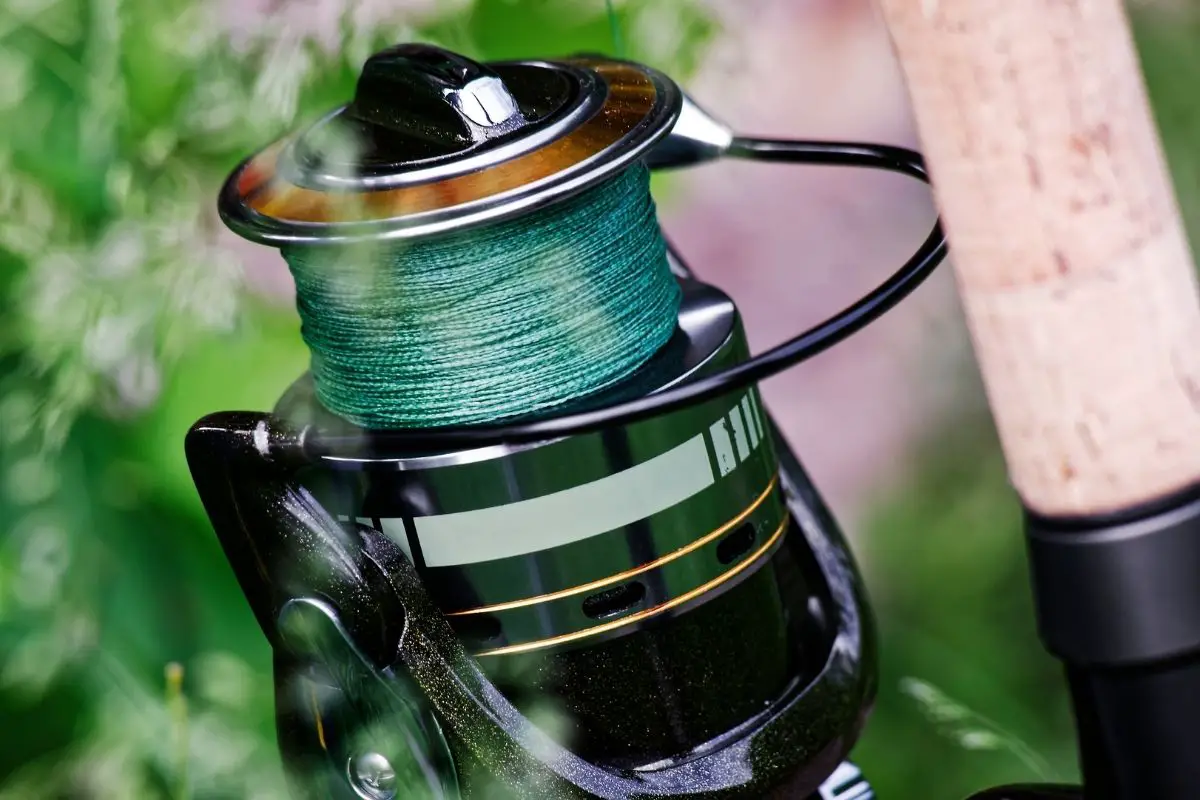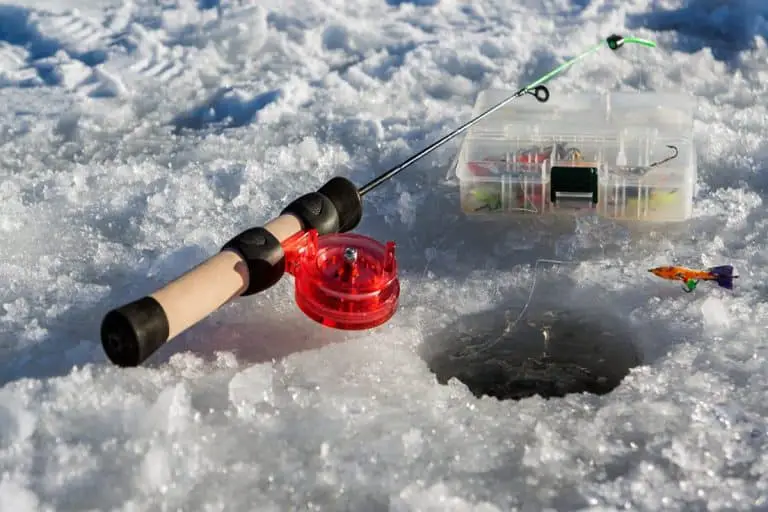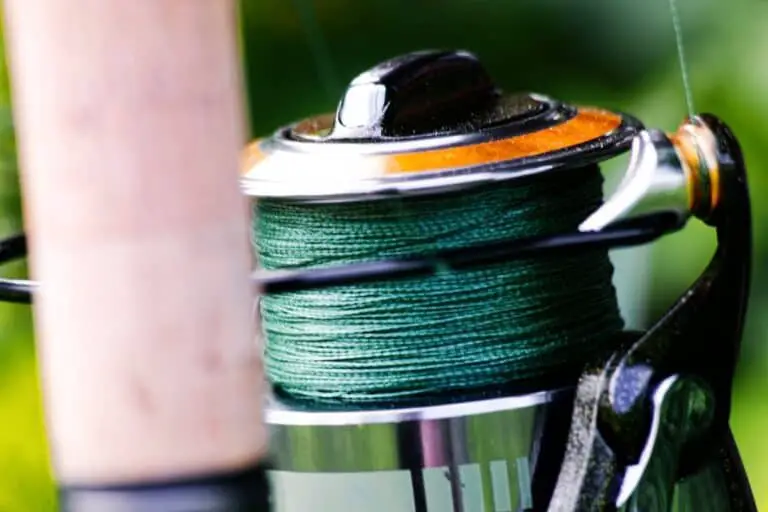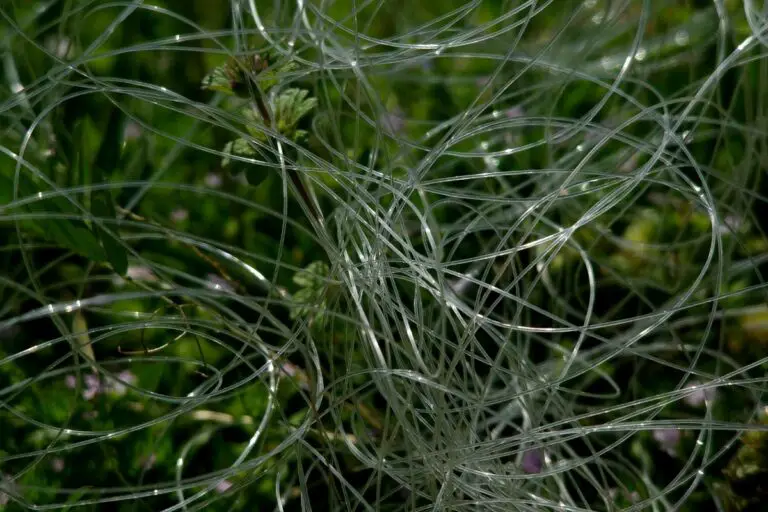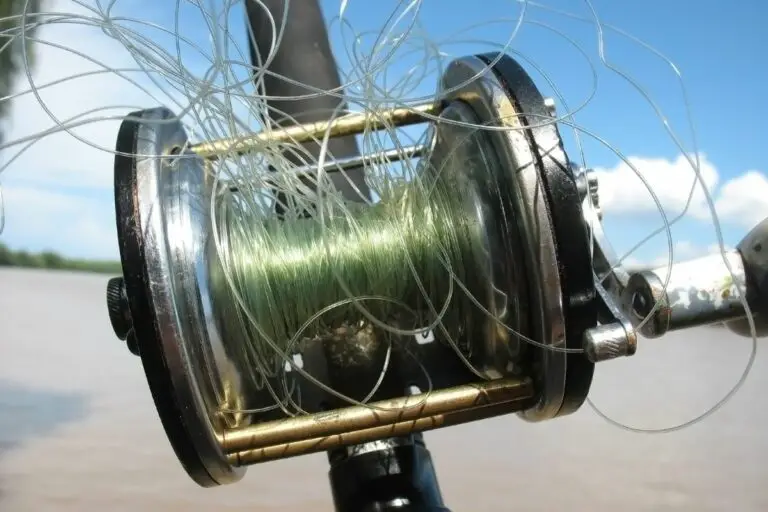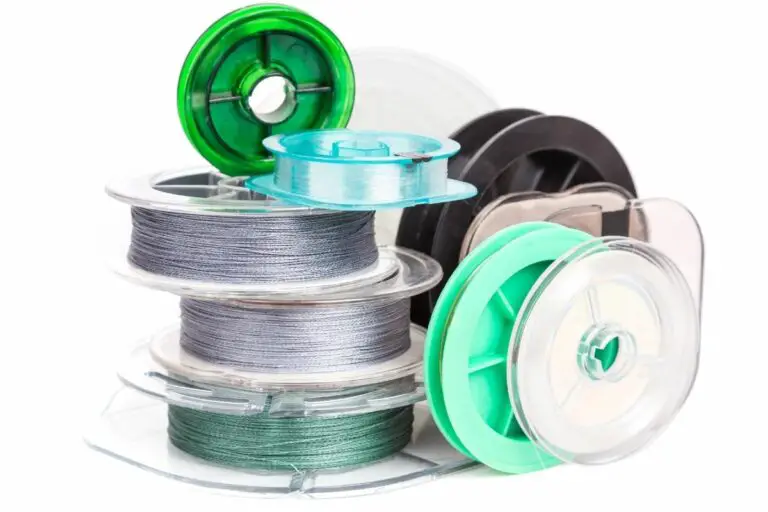Does Braided Fishing Line Go Bad? 5 Ways To Make Your Line Last
Fishing lines have no defined expiry date, although they may deteriorate with time. The last thing any angler wants is for their line to break while reeling in a huge fish.
The longevity of the fishing line is determined by the type of line used, the care used to maintain it, and a few uncontrollable circumstances. Therefore, the estimated life expectancies of Braid, Monofilament, and Fluorocarbon lines are all different.
So, does braided fishing line go bad? Braided fishing lines go bad after years of use, even if you haven’t removed them from their packaging. Their lifespan is determined by how well they are maintained and stored. When maintained properly, braided fishing lines will be good for use for a long time.
Continue reading to learn more about how long each type of fishing line can last and how to extend the fishing line lifespan of your fishing line.
Table of Contents
Does Braided Fishing Line Go Bad?

The life span of a braided fishing line is the longest of any line type. With a little care, your braided line can possibly last a decade.
When a braided line loses its color, most people interpret this as an indication that it’s gone bad and has to be replaced. This is incorrect; the dye in the braid simply does not adhere properly; it quickly fades, but this has no bearing on the quality of your line.
Braid typically goes bad due to chipping and pointed rod guides. The damage will be unnoticeable initially, but eventually, it will eat away at your line.
So, make sure to inspect your reel for any unusually large gaps or rough, chipped edges.
To increase the lifespan of your braided lines, you need to carefully spool them on the reel. You can have someone do it for you at any bait shop or learn to do it yourself. You also need to choose a good braided fishing line from the beginning, and you can find my recommendations for the best brainded Fishing lines here.
How Long can Fishing Lines Last?

Every fishing line’s lifespan is determined by how well you care for it.
It’s best to use any unopened fishing line as quickly as possible. Avoid storing them for an extended period of time as you wouldn’t be able to obtain a good stretch.
It’s also best to rinse your fishing line after use and keep it away from direct sunlight and severe heat.
Let’s take a closer look at how you can care for different types of fishing lines and how long they last.
Monofilament
Monofilament, usually known as “mono,” is the most commonly used type of fishing line. This kind of line is constructed primarily of nylon and synthetic fibers and consists of a single long, continuous strand.
The monofilament line has the ability to stretch when tugged since it is constructed of a single strand of material.
It is the most prone to light damage as sun exposure will eat away at it considerably faster than any other line. However, it’s most resistant to abrasion damage.
It is generally recommended that you change your monofilament line yearly. Yet, this is dependent on how you utilize and mistreat your line.
What Is the Life Expectancy of Monofilament Lines?
- 4-6 months of frequent fishing
- 1 year of casual fishing
- 1 year of seasonal fishing
- 3–5 years on the shelf
You can check my recommendations for the best monofilament lines here. These are the Mono lines that will last the longest without hurting your wallet too much.
Fluorocarbon
Fluorocarbon fishing lines, like Monofilament, are constructed of one single strand of line, but they are made of polyvinylidene fluoride, which provides it more strength than nylon.
It’s quite rigid, which contributes to its durability, but the extra memory makes it difficult to wrap over reels correctly.
With a full spool of fluorocarbon, casting and reeling may be tricky, as it’s easy to tangle. However, since it is more durable, it is generally utilized as a leader.
What Is the Life Expectancy of Fluorocarbon Lines?
- 6 months of frequent fishing
- 18 months of casual fishing
- 2 years of seasonal fishing
- 7 to 10 years on the shelf
I also have a guide to the best fluorocarbon lines here, make sure to check them out as these are the ones that will last the longest.
Braided
This kind of fishing line is the strongest and will endure the longest of all types.
Braided lines are the most resistant to light damage and other abrasive elements. Learn more about when to use a braided fishing line.
If you don’t fish frequently, you may change your Braided Fishing Lines once a year. However, It is recommended to replace your fishing line once or twice each year if you enjoy heavy fishing.
What Is the Life Expectancy of Braided Lines?
- 1-2 years of frequent fishing
- 2 years of casual fishing
- 3 years of seasonal fishing
- over 10 years on the shelf
How to Make Your Fishing Line Last Longer?

There are several methods for extending the lifespan of your fishing line.
The most important thing to consider is the type of fishing line you have, how you fish with it, and how often you use it.
Here are some tips you can follow to make fishing lines of any type last longer:
Keep the fishing line away from direct sun exposure
One of the most crucial components of extending the life of your fishing lines is proper storage.
The quickest method to protect and increase the life span of your fishing line is to store it in a cold, dry, and dark area.
This is crucial for monolines, but it doesn’t harm to do the same for fluorocarbon and braided lines.
Reel your line onto the spool properly
You can only go so far in terms of storage. Learning how to load lines into your reel will save you money and keep your line from snapping or breaking while out on the lake.
Remember, how you do this will be determined by the sort of fishing line you use.
Inspect the line for breakage or damage regularly
Waiting for your fishing line to break is not a good idea. You can usually tell when it’s been damaged and requires some care.
Before using your line, inspect it for visible damage, including chipping, cuts, or loose strands. Also, ensure that it isn’t trapped on your rod.
Make effective use of your line
Finally, if you are not using your fishing line effectively, it will degrade over time.
For instance, avoid using braided lines in the water that may scuff it, and avoid using fluorocarbon lines for heavy captures that would distort it.
Use a conditioner on your fishing line
Conditioning your fishing line will help it last even longer. This will help it withstand the weather, avoid damage, and, according to several anglers, will result in smoother throwing.
You might use a store-bought fishing line conditioner, or you could make your own at home.
How to Determine Whether Your Fishing Line Needs To Be Replaced?

Fishing line damage is unavoidable. Because they are made from synthetic materials, they will degrade gradually with time, even if you keep them stored with no use.
Regardless of the estimated life expectancy of your fishing line, it isn’t designed to survive indefinitely.
Even if your line isn’t broken, replacing it regularly may enhance your entire fishing experience and could help you capture more fish.
Yet, how do you identify when the fishing line has reached the end of its lifespan?
In general, the damage will be evident on the line, and it’s preferable to toss and replace rather than try to fix it.
No matter how hard you try, if your fishing line is stretched, stiff, curled, or otherwise distorted, it will not restore to its original brilliance quality. There’s a lot more to learn about whether your fishing line is still good.
Here are two situations in which it’s strongly advised to replace your fishing line:
- The line has become frayed.
- There isn’t enough line left on your spool.
The line has become frayed.
When the line seems fuzzier, this indicates that it has frayed. Fraying your line will significantly weaken it.
If you remove a lot of line from your spool and it’s all frayed, it’s definitely time to replace it.
It might also indicate that the line roller on the bail is corroded or contains debris, so make sure to check it for damage.
You also need to inspect your rod’s guides for chipping, especially the top guide, by swiping a Q-Tip around the inside of each guide. If anything grabs the cotton, perhaps there is a crack in there that is fraying your line.
Finally, don’t mistake fraying with color fading. The line’s color might start to fade, but that doesn’t indicate that it’s damaged or frayed.
There isn’t enough line left on your spool.
The line will become shorter over time when you tie on fresh leads and clip tag ends, cut wind knots out, or cut off frayed pieces of your line.
So, here are two things that can occur if the line grows shorter:
- Casting distance will be reduced.
- It may get unspooled if you hook a large fish.
Consider replacing your reel if it becomes noticeably less full of line and you begin to lose casting distance.
Which Is Better: Fluorocarbon, Monofilament, or Braided Fishing Lines?

The answer to which type of fishing line is better relies on your fishing method, the fish you wish to capture, your lure, and your fishing location.
Here’s a detailed review of the main three types of fishing lines to provide you with a better understanding.
Braided Fishing line:
- They have a smaller diameter, which helps improve casting and allows a greater capacity on the reel.
- Braid has almost no stretch and memory, making it ideal for deep-water fishing because it will allow big lures and deep-diving crankbaits to move in the water.
- Braid is incredibly sensitive due to its non-stretch structure, allowing you to detect even the most minor fish nibbles. It will also give strong hooksets.
Monofilament Line:
- Many anglers, experts, and beginners utilize it as their primary fishing line.
- It’s the most inexpensive fishing line to purchase, making them the best pick in the fishing industry.
- Monofilament fishing lines offer a broad array of applications and may thrive in various scenarios.
- Due to its strong impact resistance, it can tolerate places with a denser cover of wood and stones.
- But, keep in mind that Monofilament has a larger diameter. As a result, it shortens the throwing distance and is susceptible to high winds and water currents.
Fluorocarbon Line:
- Fluorocarbon fishing lines are the most recent addition to the fishing business.
- It resembles a monofilament fishing line and has the characteristics of braided fishing lines.
- Fluorocarbon is suitable for deep-diving lure fishing.
- Also, they would seem invisible beneath any type of water.
Still can’t make a decision? I’ve made these comparisons to help you do so:
- Monofilament vs fluorocarbon lines comparison
- Monofilament vs braided lines comparison
- Fluorocarbon vs braided lines comparison
Related Questions
Do Unused Fishing Lines Go Bad?
Unused fishing lines do go bad over time. It could be due to improper storage or simply due to being past its shelf life. Braided lines tend to last longer than monofilament and fluorocarbon lines, even if they were not used.
How Long Is Fishing Good on a Reel?
A fishing line is good on a reel for about 6 to 12 months. It mainly depends on the type of line and the frequency of use. Braided lines tend to stay good on the reel longer than monofilament and fluorocarbon lines, so they will need replacement less often.
Do You Need to Use a Leader for Braided Lines?
You do need to use a leader for braided lines. That is because braid doesn’t grip well if it was tied directly on the spool and will start unraveling which could lead you to lose your catch. So, it’s recommended to use a monofilament line as a leader and tie it at the base of the spool to ensure that the braided line will grip well.
Is It Good to Soak Your Fishing Lines Before Spooling?
It is good to soak your fishing lines before spooling them as this will help make the spooling process much easier. It will also reduce the chance of the line getting tangles and improve your casting performance. It’s best to use warm water and to leave the fishing lines in the water overnight.
Helpful Resources
How to Pick the Right Kind of Fishing Line
These Are The Fishing Lines I Absolutely Love
- After Testing endless brands and varieties, these are the best Fluorocarbon lines, these are the best Braided lines, and these are the best monofilament fishing lines.
- These are the best Ice Fishing Lines for your money
- These are the fly fishing lines that have never let me down.
- Targeting Trout? These are the best fishing lines for trout. For Bass, use these bass fishing lines.
- Not sure which fishing line to use? Check out these comparisons:
- Going Crappie Fishing? These Crappie Fishing Lines outperform everything else (and their price!)
If you like this article, please share it or pin it, you can find the share buttons below. We will really appreciate it ❤️

